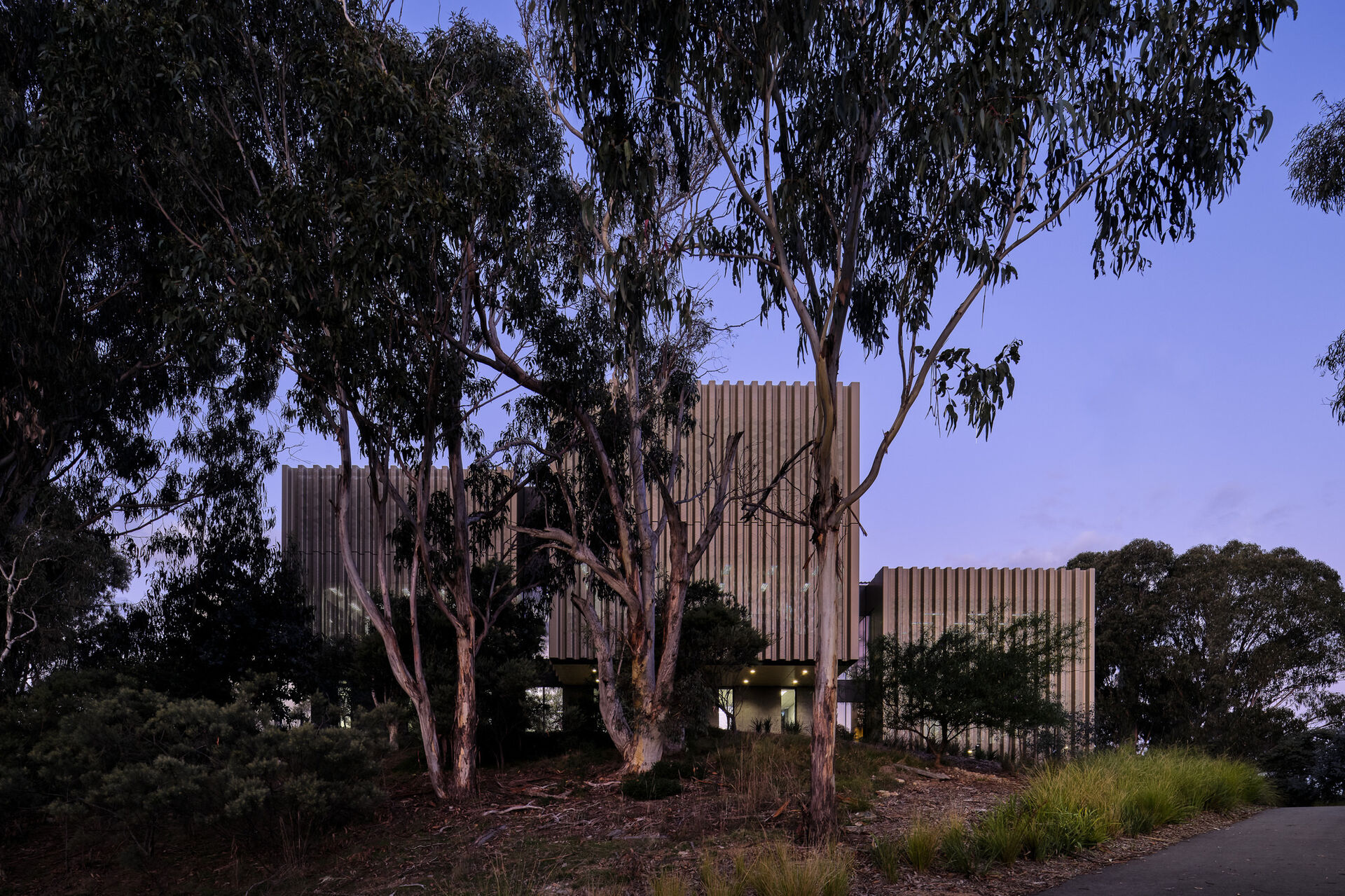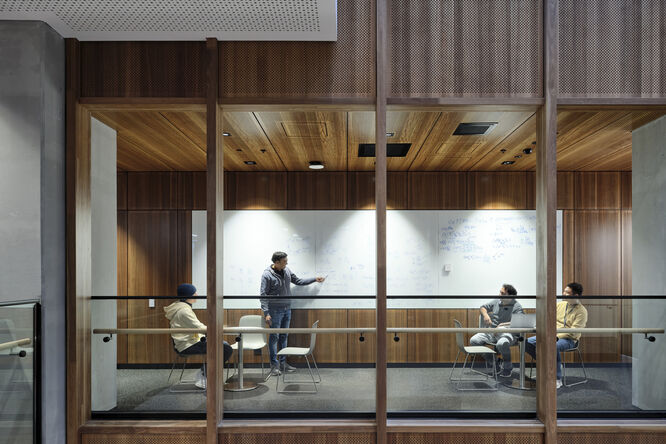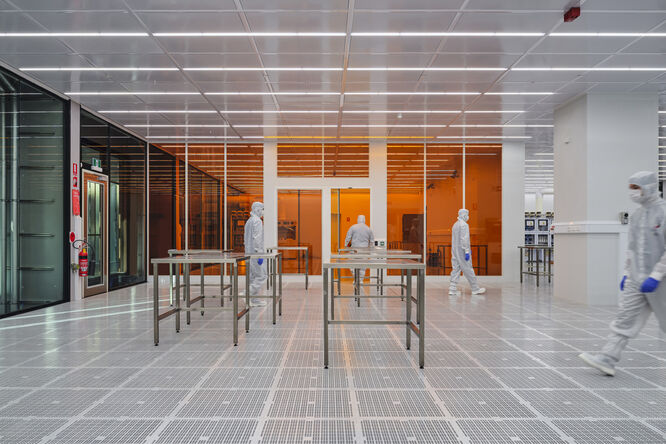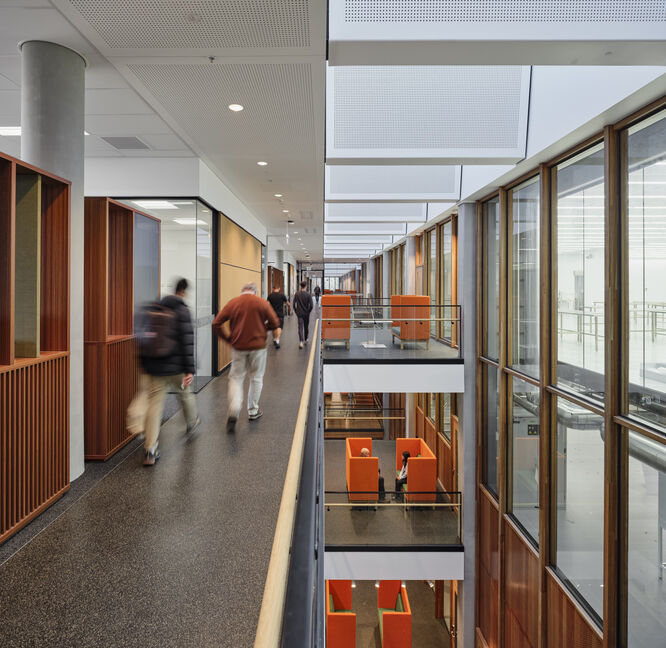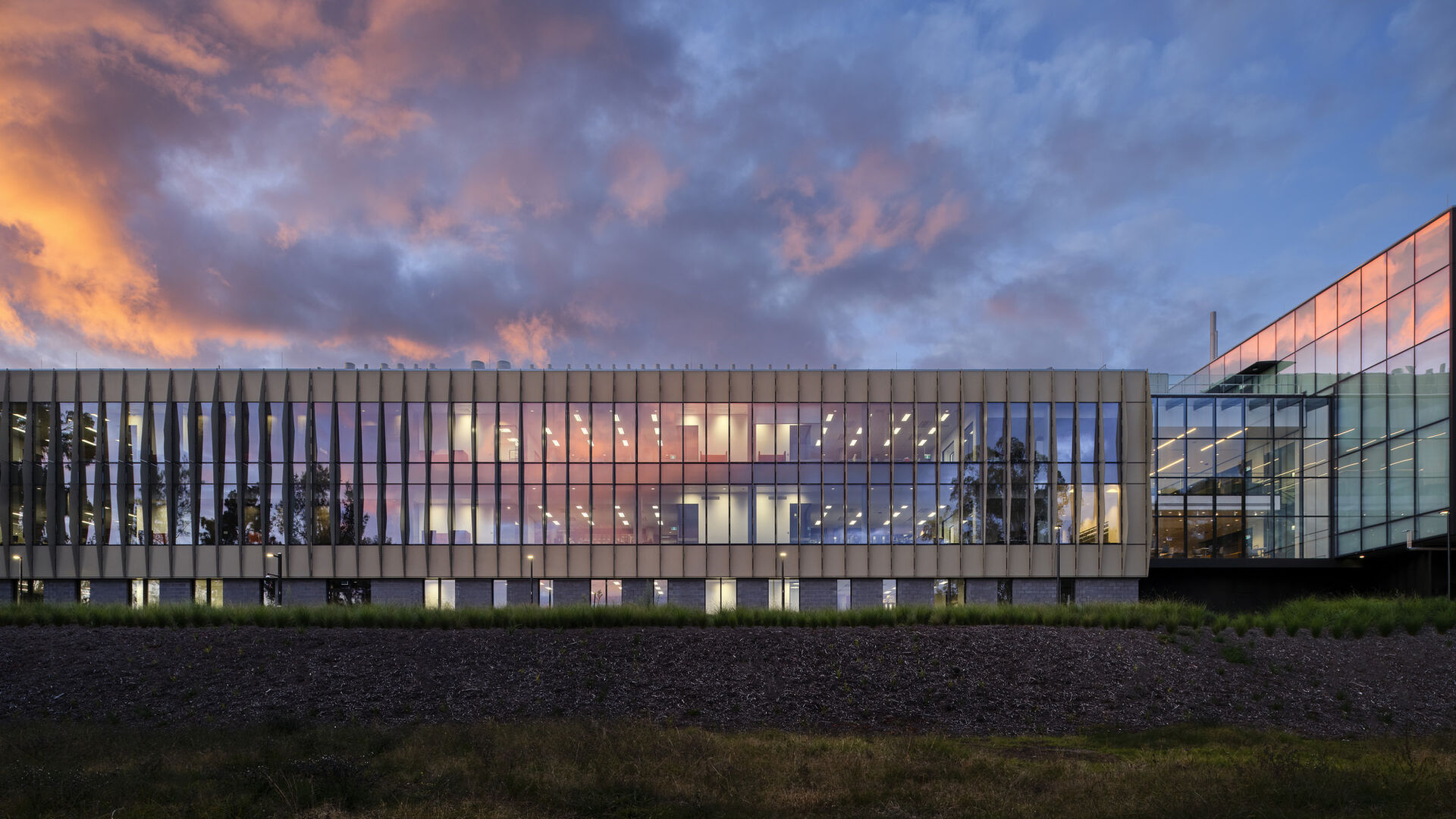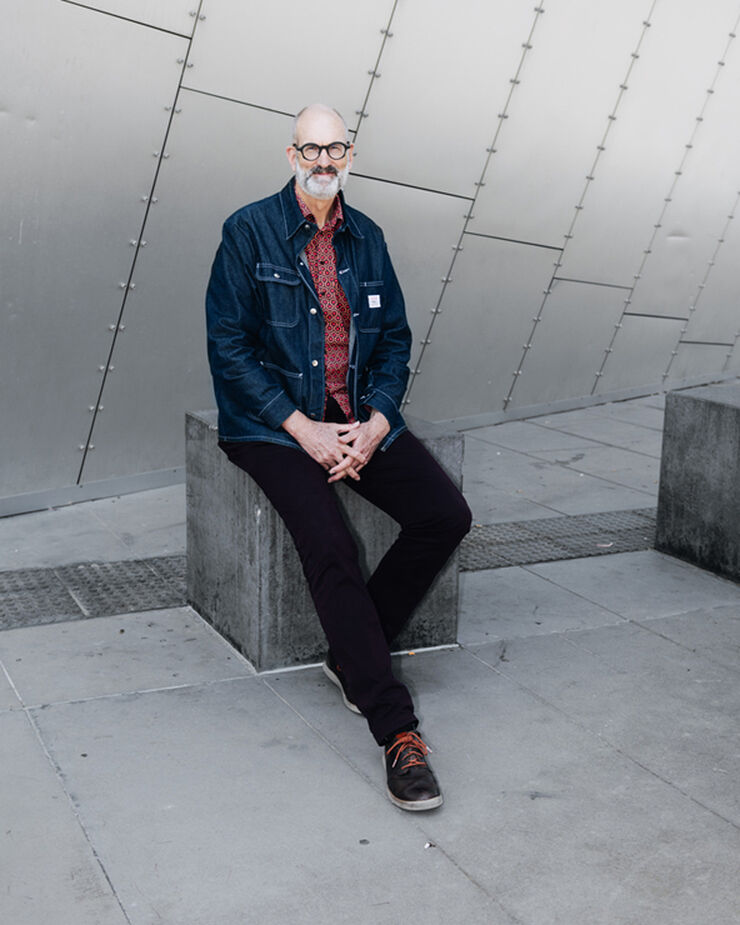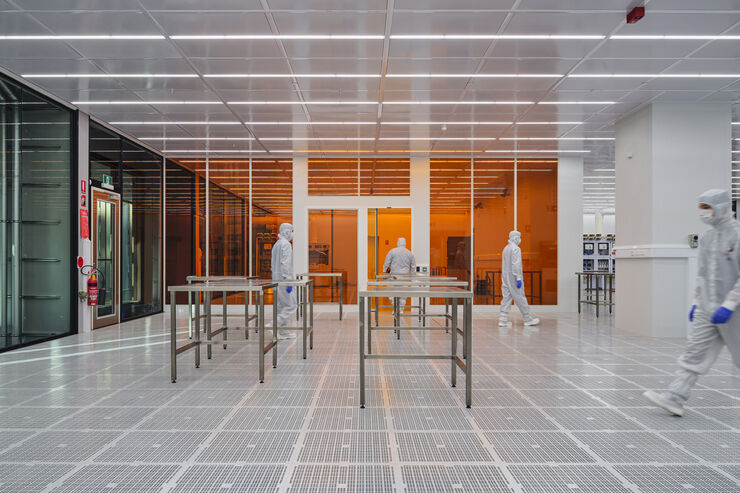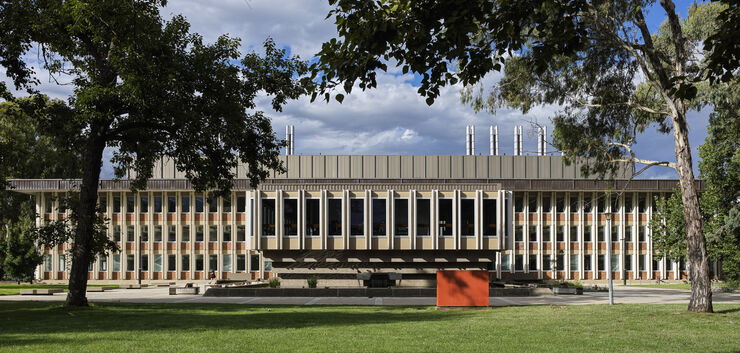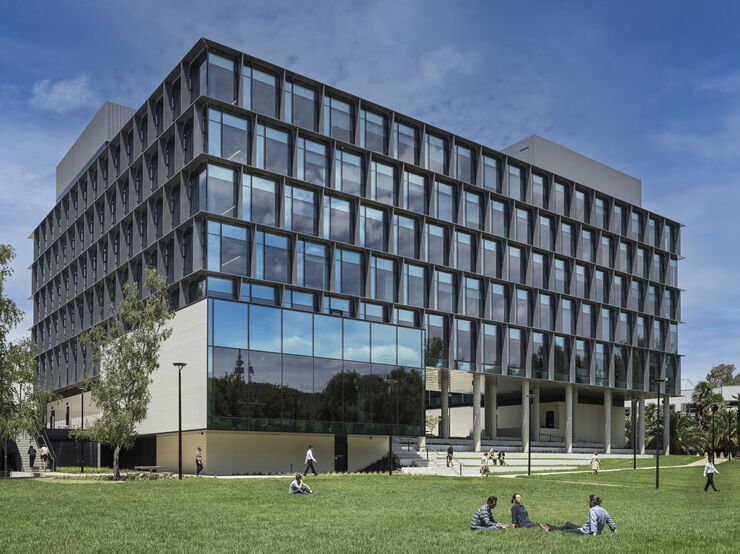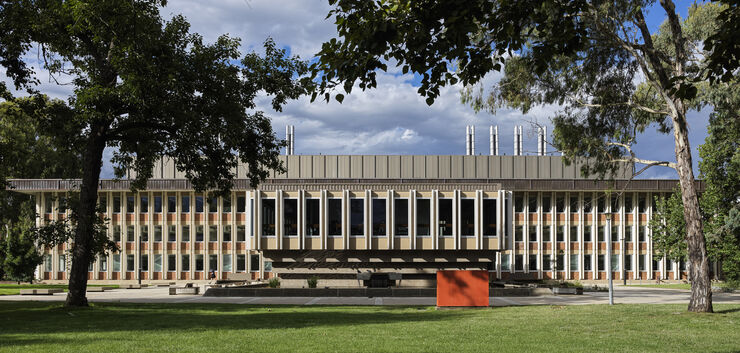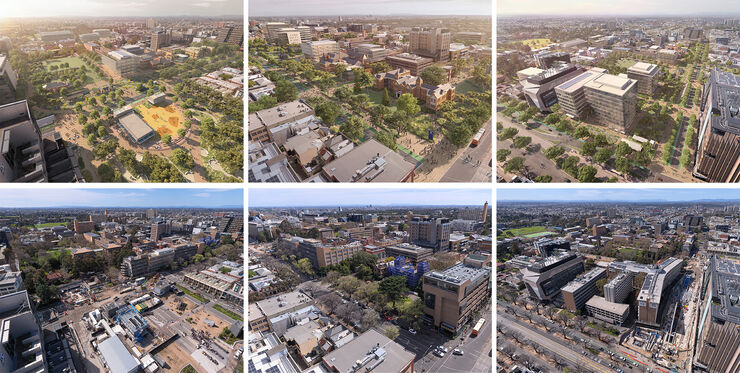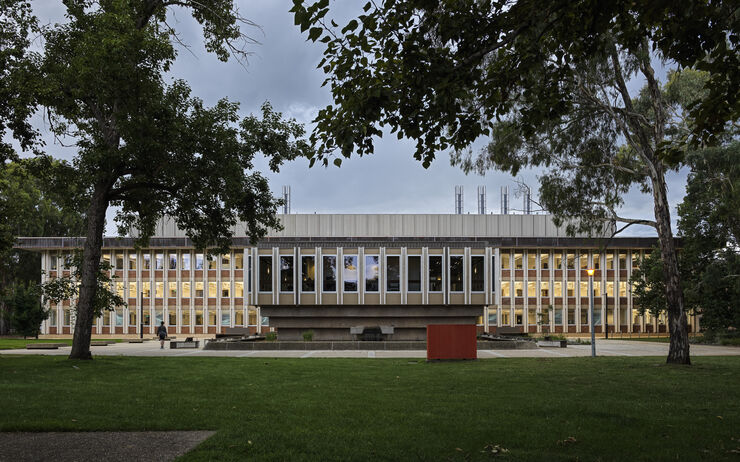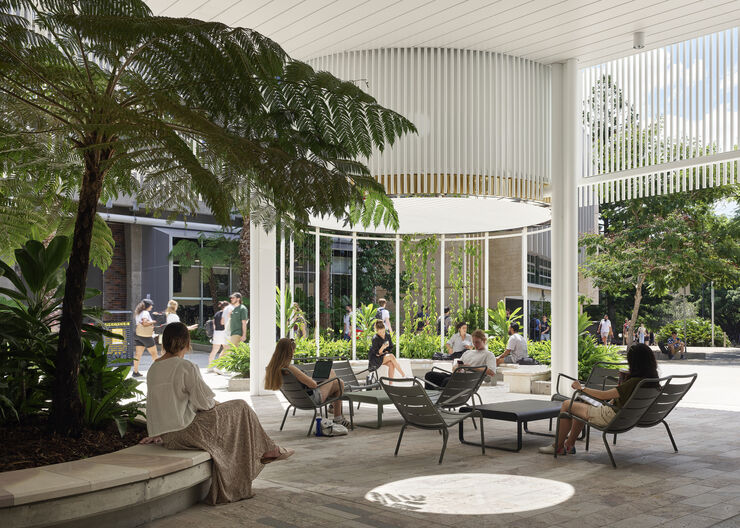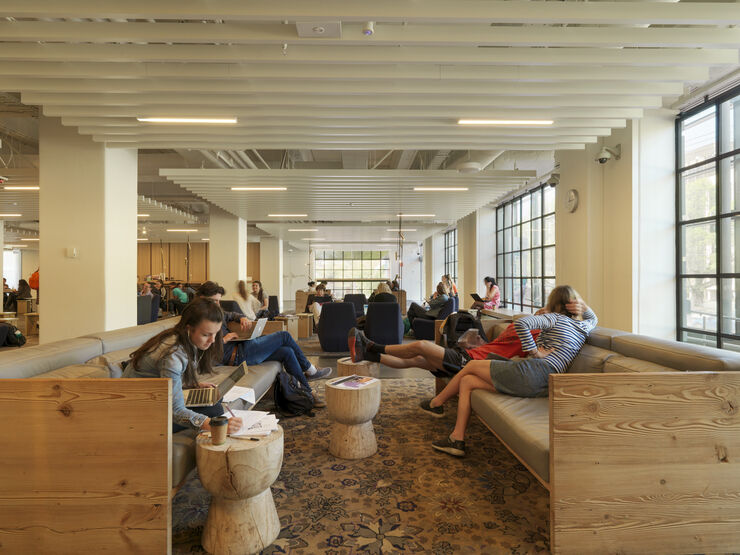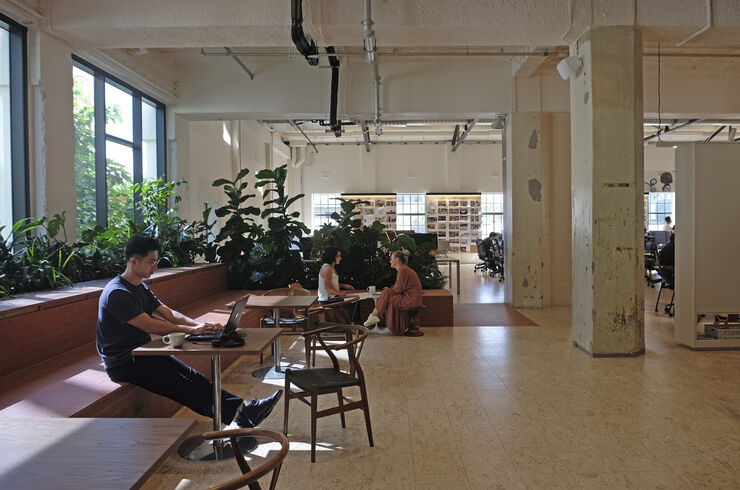With a design that boldly sets the direction for the next century of innovation and discovery, ANU’s Research School of Physics realises the first phase of Hassell’s Master Plan.
ANU’s Research School of Physics (ANU RSP) is the first of a four-stage Hassell-designed master plan for the university’s physics precinct. The building is a milestone on a transformational eight-year journey and partnership between Hassell and the Research School, signalling a new era of ingenuity and visibility.
“Over the past 50 years or so, we locked physics away and now this new building puts it back in the spotlight. The design invites the rest of the university in, and having that spectacular Lake view, it’s bringing the public in too.”
— Director of the Research School of Physics Professor Tim Senden
Inside the high-tech centre, shared research platforms are encircled by collaborative research offices for focused intellectual endeavour, along with interactive spaces for school engagement with students, research colleagues and industry.
The jewel in the building’s crown is the 1600 m² world-class flexible nanofabrication laboratory — the largest and first of its kind in the southern hemisphere. This facility, together with the 22 ultra-stable labs, will enable the brightest minds in physics to advance the frontiers of quantum physics, photonics, and nanotechnology.
The lab facilities are enclosed in a transparent three-storey timber mullioned glass shell giving visual prominence to the research conducted inside and, importantly, offering researchers views to other parts of the school and landscape beyond. Generous skylights illuminate the atrium’s open staircases and interaction terraces that link labs to workspaces, bringing further animation and delight to the interior.
Privacy and openness are balanced throughout the building as the glass invites people to look in and understand even if they can’t touch. According to ANU’s Research School of Physics Director Professor Tim Senden, the design brings people close to an extremely active and potentially hazardous space but does that safely without locking things away behind walls. “The environment invites discoveries and engaging collaborations and is a place to communicate new understanding,” says Director of the Research School of Physics, Professor Tim Senden.
With the co-location of the laboratories with semi-open neighbourhood workspaces, the school welcomes a shift toward better knowledge-sharing between research ‘tribes’. Social areas support life beyond the secure laboratory and workspace zones, encouraging impromptu interactions between the physics research cohort, students, and visitors.
Principal Mark Roehrs explains that the design resolves extremely complex and technical laboratory requirements while giving presence and visibility to the exciting research and discoveries happening within. It enables focused work combined with new modes of engagement and interaction. “Most importantly it creates beautiful spaces that the scientists enjoy being in intimate, yet visually interconnected spaces animated in soft atrium light with the warm materiality of timber framing transparency and outlook,” says Principal Mark Roehrs.
New for the school, a 250-seat auditorium is designed for performative science and public outreach. This auditorium and all meeting spaces above command views out over Lake Burley Griffin.
While looking to the future, ANU acknowledges the history and landscape of Canberra as it establishes new sightlines across Lake Burley Griffin and a new identity and address on the ANU Campus. A lightweight veil of sun shading enhances the thermally insulated and sealed perimeter curtainwall system. Gravitational wave patterns pay homage to discoveries made by physicists while creating a dynamic façade for fast-moving traffic to experience from Parkes Way.
